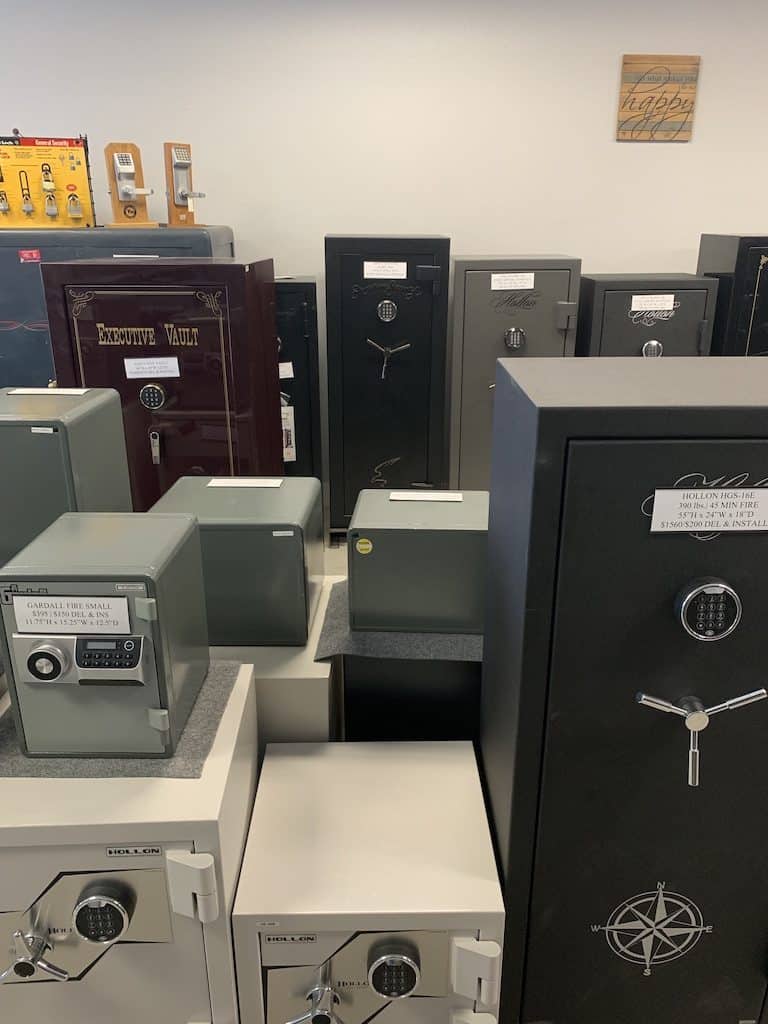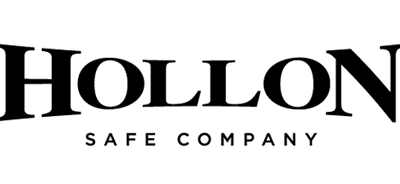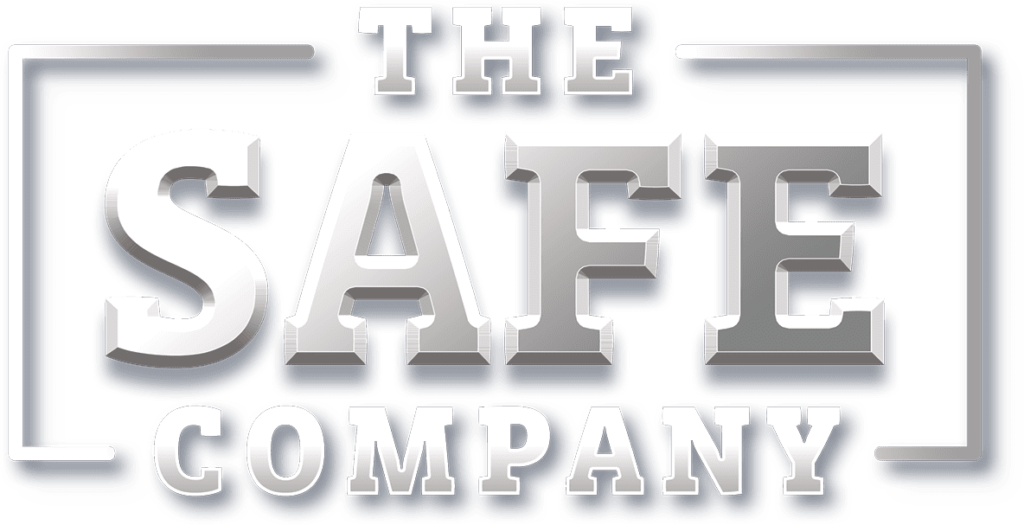
Although price is important when buying a safe, sometimes what appears to be a good deal isn’t because the safe won’t meet your needs. What you need will depend on what you’re putting into the safe. If the only thing that you care about is fire protection and you’re not worried about the integrity of the safe, then an inexpensive safe that you get online or at a big box store is going to suit your need. But if you want to add security to a safe, those safes just aren’t going to cut it. You want to keep people out of your safe. The level of security largely determines the price you get. What you pay for is exactly what you get if you want to hide your valuables with a concealed safe.
Once you know what you want, you can then make an informed decision and compare prices for manufacturers on safes that are equivalent. So let’s take a look at something that’s very important, and that’s the door thickness. This should be your number one concern. Now, when I’m talking about door thickness, I do not mean overall door thickness. The overall door thickness of a safe is really irrelevant. The two biggest components of overall thickness are the fire board in the air inside the door.
Those are not security features. Most consumers aren’t aware of that. And when they see a safe that’s advertised as having a five inch thick door, they’re thinking they’re getting more security. But that’s not always the case. What you need to consider is the metal thickness that is covering or protecting the door in order of best to worst. Door thickness will either be a solid steel plate over the entire door, which is the best, a solid steel A. drill plate around the lock on the door or compress pieces of sheet metal press together, which is the worst.
Those big box store gun safes are usually protected by only a thin sheet of metal wrap around the fire board on the front door that can be pried open in less than 60 seconds, say with a.. Drill plates, provide additional security, protect the safe from being drilled, but not from prying.
So they’re a bit better than nothing. However, when you do see that they have an anti drill plate, you will find that they’re using thicker steel than those that don’t. And if you’re putting anything of real value into the safe, you want a door with a solid steel plate, at least three sixteenths of an inch thick teal, 15, teal, 30 burglary rated safes typically have solid steel doors of three to a half inch thick. A teal 30 rated safe is the highest rated safe generally available to the public.
In fact, 30 rated safes are the same rating that is required of jewelry stores in order to protect their valuables. After you look at door thickness, you want to consider the side thickness of the safe. This is an area that is often attacked when trying to get in big box store safes. Again, here we’ve seen safes with sides of plastic or metal, less than one sixteenth of an inch thick. The wrap surrounds the fire board that gives you your fire rating, but it’s not enough to protect any valuables inside of the safe.
If you’re looking to protect valuables inside of the safe, you want to make sure that that wrap is at least eleven gauge metal or one eighth of an inch. Our favorites have eight gauge wraps. Here’s a little tip. When you’re looking at the gauge of steel, instead of looking at the inches or the millimeters of the of the steel, the lower the gauge, the thicker it is. So 10 gauge is thicker than twelve gauge and 12 gauge is thicker than the 14 gauge, etc.
For extreme valuables, you want to upgrade to a safe that uses a concrete slurry instead of board to get the fire rating. The concrete is poured between the inside and the outside of the safe walls, usually two inches thick. It contains a composite of material called Dry Light by one manufacturer that eats through drill bits trying to penetrate it, some burglar rated safes and nearly all 15 to 30 safes use some kind of a cement composite. And at the very highest level of security, you have something called a thirty by six safes.
That is a teal thirty rated safe on every side of the safe, not just the door. After you’ve considered the security of the door, you want to consider the strength of the bolts. You already know that bolts are important. There are a lot of cheap safes where the entire length of the bolt is barely long enough to secure the door when locked underneath. The bolt is is hollow in the bolt is held in place by what appears to be a very thin, narrow aluminum rod. Do you want that to be the only thing between your valuables in a thief? I don’t think so. When considering safe bolts, look at the overall width of the bolt. The bigger the bolt, the more it distributes force.
When a safe door is getting pried open, diameters of one to one and a half inch are what you want to be looking for. The thickness of the safes metal where the bolts come out is often the same thickness as the steel sheet surrounding the entire safe. For the better, manufacturers are actually reinforcing this with a bolt guard so that you actually get a thicker armor area around that bolt bolt should be long enough to ensure that the bolt is fully inside the door and secured to the safe.
When the door is locked, you want a bolt of at least two and three eight inches long. The longer, the better you’ve decided on the level of security you need for your safe, which translates to door thickness, side thickness, the bolts, all of those aspects that we’ve already talked about. Then you’re ready to start comparing safe side by side. So when you’re looking at safes with those same security features that you want. Consider the weight per volume of the safe.
So if you have two safes that are about the same size, go with the safe that weighs the most because that will let you know about the strength of materials being used in areas you can’t see, such as how thick and how heavy are the rods that are extracting and retracting the bolts, the heavier safe for unit volume in the same category of the safe that you’re looking at, the better quality of the safe that you’re going to buy. Hopefully you found this information useful. For more info on safes, you can check out The Safe Company’s service pages.












